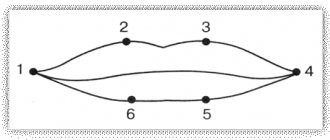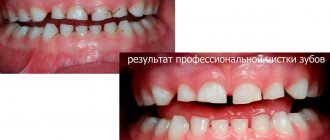People often experience a lump in the throat. Everyone has experienced this feeling at least once in their life. The feeling of a lump in the throat most often occurs without physical reasons, after experiencing stress. At some point, you notice that something is bothering your throat or starting to feel sore.
For some people, this feeling remains for a long time and even begins to cause discomfort when swallowing. In this case, other accompanying symptoms may occur, for example, sleep disturbances, increased levels of anxiety, decreased mood, etc. But there is no need to rush to conclusions and think about the presence of some complex, incurable disease or physical damage.
In the vast majority of cases, this feeling has psychological roots, and treating a lump in the throat is not difficult and responds well to therapy. However, in advanced cases, when it is not treated correctly or the process is prolonged or untreated for a long time, complications develop. Therefore, in order to undergo high-quality therapy and get rid of a lump in the throat, it is necessary to undergo a psychological differential diagnosis.
We carry out full differential diagnosis and treatment, which is completely successful in more than 90% of cases. There are many different options for disruption of higher nervous activity and the formation of sensations of a lump in the throat.
Our slogan is from quality diagnosis to complete recovery!
Find out what may be causing that lump in your throat! When is a complex disorder likely to occur? What to do when you feel a lump in your throat?
What can cause a lump in the throat?
The sensation of a lump in the throat occurs as a result of the occurrence of any disease. However, the most common cases are when a lump in the throat is felt after suffering stress or experiences. The feeling of having a lump in the larynx, if associated with psychological reasons, does not pose a health risk. It is not uncommon for this feeling to go away on its own within ten days or a week. However, when this sensation occurs, discomfort often occurs. Depending on individual characteristics, this inconvenience may be felt in different ways. Incorrect identification of the causes and ignorance of the factors that form this sensation often leads to serious consequences and speculation.
How does a lump in your throat feel?
- lump in throat while eating or after eating;
- sensation of a lump in the larynx throughout the day;
- sore throat and feeling that something is bothering you;
- a lump in the throat seems to interfere with breathing, which often leads to panic;
- a burning sensation or other unpleasant feeling appears in the throat area.
More than 90% of complaints about a lump in the throat are due to so-called psychogenic causes. This symptomatology is often associated with high psycho-emotional or psychophysical overload. In the modern world, we encounter such overloads every day, often several times a day. At work, in transport, in shops, at home. But this feeling does not appear for everyone. Why does this happen and why doesn’t it happen to everyone?
This phenomenon has been well studied, and a competent doctor will always be able to correctly understand and provide assistance, independently or refer you to a specialized specialist. Conditions in which this feeling may appear can occur in both men and women of any age. However, people of the most productive, working age are the most vulnerable. In people between 25 and 50 years of age, these complaints are most common.
1.General information
It would seem that any person who has had a runny nose at least once is familiar with this uncomfortable sensation: somewhere in the depths of the nasopharynx, something has accumulated and interferes with every swallow, and it is necessary to get rid of it urgently, by any means... Considering that a runny nose is the most common from painful human conditions, we can safely assume: this feeling of “internal runny nose” is known to everyone, and it is known so well that there seems to be nothing to talk about here. In the end, the mucous membranes of the nasopharynx normally produce large volumes of secretion, some of which flows down the back wall, is swallowed with saliva and food, sometimes accumulates - for example, after a night's sleep - but, in general, does not create any special problems.
However, the flow of moisturizing and bactericidal mucus along the posterior nasopharyngeal wall into the laryngopharynx is not always “normal” and problem-free. It's all about the causes of hypersecretion, the composition and properties of mucus, and its quantity.
Rhinitis (runny nose) and accompanying rhinorrhea (profuse discharge of mucous discharge from the nasal passages) is, by and large, not a disease. This is a symptom, a sign of a particular pathology. Sometimes this symptom is quite expected and really does not have any particular clinical significance, but in some cases it requires special attention and examination. For such cases, a special term has been introduced, which is found in the literature in several synonymous spellings: postnasal drip syndrome (English: “postnasal drip syndrom”), retronasal drip (sometimes written “drip”), retronasal discharge, internal runny nose, postnasal syndrome. It was first described at the end of the 18th century under the name “chronic pharyngeal catarrh.”
A must read! Help with treatment and hospitalization!
When does a lump in the throat appear?
The modern world constantly requires high mental and energy costs from a person. However, our nervous system, just like other organs, requires various types of rest. But the intensity of life does not always and does not allow everyone to pause and give the necessary rest. We try to do everything everywhere and in time. We often eat incorrectly or insufficiently, disrupt our biological rhythm, and do not have enough time to sleep. It is not uncommon for all this to be aggravated by the consumption of alcohol, energy drinks, other psychoactive substances, and even smoking regular tobacco.
Due to all these factors that accumulate over a period of time, at some point the nervous system becomes especially vulnerable. At such moments, not even a high psychological load or some chemical factor (for example, not even a large dose of alcohol) can “break” the normal, biological metabolic process of the brain. This may coincide with a spasm of the throat muscles, which many times could pass without a trace or go unnoticed. But, at this moment of breakdown of the nervous system, this spasm is recorded and “remembered” by it as a “pathology”. It is from this moment that a person begins to fixate his attention on the sensation of a lump in the throat, and the nervous system creates a “ghost” of the lump. And since all this is associated with a violation of the metabolic processes of the brain and is recorded in disturbances in the transmission of information, the sensation of a lump in the throat is not only recorded by consciousness, but also begins to progress, causing a lot of inconvenience.
When to see a doctor
It is important to know that the psychogenic causes of a lump in the throat are not dangerous to the physical condition. However, this does not mean that no complications will occur and there is no need to consult a doctor. This feeling itself rarely goes away. If the feeling of a lump in the throat does not have real somatic reasons and does not go away within 2-5 days, then we recommend that you consult a psychotherapist after this period.
We recommend seeing your GP on the day this feeling starts, but no later than the next day. This is due to the fact that such symptoms can accompany some truly dangerous diseases.
The main reason for this is that emergency medical attention may be required. Situations are especially dangerous if swelling, some kind of tumor, pain in the throat or chest, difficulty breathing, difficulty swallowing appears within a short time. This may be a sign of a more serious problem. The doctor will refer you to a specialized specialist; additional hardware or laboratory tests may be needed.
However, if the studies do not show anything significant or acute, then this means that the cause is psychogenic and you need to go to a psychotherapist or psychiatrist. It is necessary to exclude the possibility of somatic diseases.
Another, no less significant reason is that the sensation of a lump in the throat is only a signal from your body about the onset of a problem with the nervous system. If a person does not receive full medical care in a short time, the breakdown of the nervous system begins to progress. Complications begin to form and symptoms such as depression, anxiety, fears, obsessive thoughts and others may gradually begin to appear. To avoid complications, you need to contact a good psychotherapist or psychiatrist as soon as possible.
Differences between a runny nose due to irritants and a cold
Some patients confuse colds with rhinitis and a runny nose, which appears due to the action of irritants on the nasal mucosa. As a result, the disease is treated incorrectly and this causes the condition to worsen. If you cannot independently determine the cause of excessive mucous discharge from the nose, a mandatory visit to an ENT specialist is required. The doctor will be able to identify why the nose is running and prescribe therapy that will be effective in a particular case.
A runny nose, which is caused by an irritant, is characterized by the presence of the following manifestations, which do not occur with the cold form:
- unexpected development - it is not preceded by general malaise or headache;
- intense itching and burning – felt especially strongly in the back of the nasal passages;
- paroxysmal sneezing – not very strong, but can be prolonged;
- swelling of the eyelids;
- secretion of a large amount of transparent mucus (extremely white), which looks more like water. When you have a cold, the mucus is yellow and thicker.
With all these manifestations of the disease, it is necessary to contact an allergist, and not an otolaryngologist. You should not expect that the problem will go away on its own and will not arise again. If therapy is not carried out, mucous discharge will be repeated over and over again at the slightest appearance of an irritant.
Lump in throat treatment
Treatment for a lump in the throat is not always straightforward or typical. The form of nervous system breakdown and the individual characteristics of each person do not imply standards. Accordingly, treatment cannot have standards and typical techniques for different people.
Therefore, therapy in our clinic is selected only individually, and standard techniques are adapted to each individual. The general therapeutic regimen can be defined as complex therapy.
How to treat a feeling of a lump in the throat
- Neurometabolic therapy;
- Psychotherapy;
- Diet, depending on severity;
- Individual daily routine;
- Additional techniques are possible (individually).
Our individual therapy always ends in complete victory over the problem. We help you get rid of the lump in your throat forever. However, if a person does not follow our doctor’s recommendations and violates the regimen or has not completed the entire therapeutic course, the treatment will be less effective and the sensation may return.
Treatment of tonsillitis
Complex treatment of tonsillitis is carried out under the supervision of an otolaryngologist; self-medication in this case is unacceptable. During the treatment period, the patient is prescribed bed rest, a gentle diet, and plenty of warm drinks. It is necessary to gargle with antiseptic solutions, carry out antibacterial therapy, and take antihistamines to reduce swelling of the throat. At temperatures above 38°C, it is recommended to take antipyretic drugs. Antibacterial and anti-inflammatory drugs are used to treat tonsils. To free the tonsils from accumulated pus, lacunae are washed using the Tonsilor apparatus. Injections into the tonsils, injection of medicinal substances into the lacunae, and lubrication of the tonsils with antiseptics are also used.
For severe pain, it is recommended to use painkillers. To treat tonsillitis, various physiotherapeutic procedures are used: ultraviolet irradiation on the tonsil area, laser and magnetic laser therapy, electrophoresis, UHF, ultrasound, oil and alkaline inhalations.
When treating chronic tonsillitis, treatment can be either conservative or surgical. surgical treatment is used in the absence of positive dynamics in treatment, or the pathology has led to serious complications. During the operation, the tonsil is removed completely or only part of it. New methods of surgery are being used - laser lacunotomy or tonsillectomy using a surgical laser.
If you have symptoms of a sore throat or if you have a long-term, indolent sore throat, contact a medical professional. Modern equipment and the latest treatment methods allow us to provide the most effective care to patients with chronic and acute tonsillitis. Complex treatment of tonsillitis allows you to achieve excellent results and avoid surgical treatment or complications of the disease. You can make an appointment by calling the center or leaving a request on the website.
Possible risks
Due to the fact that these sensations are formed as a result of a breakdown of higher nervous activity, this leads to more profound changes. The feeling of a lump in the throat is only the first symptom of the formation of the disease. It is at the onset of the disease that it is easiest to stop and completely cure. Remember that no disease, neither mental nor somatic, stands still. Any disease will continue to develop until it is stopped. Only a complete and correct therapeutic program can stop progress and cure a person. Self-help or self-medication, or incorrect treatment, are dangerous and cause complications. Complications related to the psychogenic causes of the formation of the sensation of a lump in the throat include the following mental states.
Complications of feeling a lump in the throat
- Depression;
- Anxiety disorders;
- Panic attacks;
- Intrusive thoughts;
- Neuroses;
- Phobias;
- Substance addiction;
- Psychosomatic disorders;
- Sexual dysfunctions;
- Aggression and personality disorders;
- Other mental states.
There is no need to endure or be afraid to see a psychotherapist or psychiatrist. We provide treatment on an anonymous basis. You can always contact us anonymously and your data will not be passed on to third parties or government medical institutions. We guarantee your safety.
However, do not forget that complaints about a lump in the throat in 10% of cases are associated with possible physical changes. Such as neck injuries or somatic diseases.
Classification
Acute tonsillitis (tonsillitis) or primary inflammation can occur in catarrhal, lacunar, follicular, and less often necrotic form. Secondary acute inflammation of the palatine tonsils most often occurs against the background of existing inflammatory or infectious diseases - scarlet fever, diphtheria, typhoid fever, mononucleosis, as well as leukemia,
Chronic tonsillitis is a long-term inflammatory process in the tonsils, with rare or constant relapses of the disease. Exacerbations can be caused by viruses or bacteria, or against the background of acute respiratory viral infections, dental diseases, or a general decrease in immunity.
Physical causes of a lump in the throat
- Impact to the neck, injury;
- Entry of a foreign body;
- Diseases of the trachea or esophagus;
- Inflammatory processes in the larynx and oral cavity;
- Stomach diseases;
- Cardiovascular diseases;
- Infections;
- Thyroid disease;
- Other somatic disorders.
Where to begin
In this regard, we recommend that you first try to independently differentiate possible changes in your body. Think about whether you have chronic diseases or possible injuries. Go to a specialized specialist. If no acute life-threatening conditions are found, be sure to visit a psychotherapist or psychiatrist.
This is due to the fact that very few doctors are able to determine the psychogenic cause of the feeling of a lump in the throat and will look for a somatic cause of the disorder. Incorrect therapy will create conditions for the further development of nervous system disorders and complications will begin to form. In this case, treating a lump in the throat will be significantly more difficult.
The faster you find the true cause of the lump in the throat, the faster, better and cheaper it will be to get rid of the problem. And most importantly, it will help improve the quality of your life.
Call and make an appointment with our specialists!
2. Reasons
Possible causes of hypersecretion of nasal mucus are very numerous and varied:
- acute respiratory viral infections (ARVI);
- rhinitis of allergic etiology;
- sinusitis (inflammation of the paranasal sinuses);
- foreign bodies in the nasal cavity (more common in childhood);
- long-term use of hormone-containing contraceptives, antihypertensive drugs and drugs of some other groups;
- congenital or acquired anomalies of the anatomical structure (most often a deviated nasal septum);
- adenoiditis (inflammation of hyperplastic growths of lymphoid glandular tissue);
- vasomotor rhinitis (hypersensitivity to changes in temperature, humidity, etc.);
- food allergies or ingestion of spicy, sour or other irritating foods;
- air pollution with irritants (substances or particles that irritate the mucous membrane).
In the absence of the above reasons, postnasal drip can be observed in women during gestation (so-called rhinitis of pregnant women) and in patients with gastroesophageal reflux.
Visit our Otolaryngology (ENT) page









